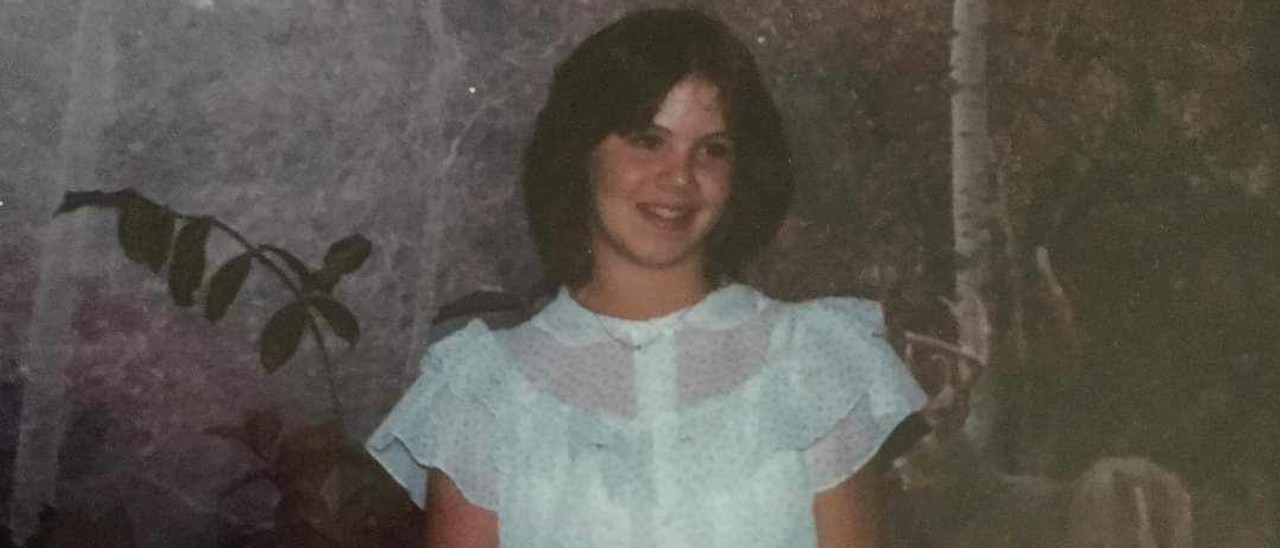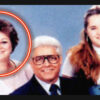Become an Apple Subscriber or Patron to listen.
Thursday, March 3, 1983 may have begun as a typical weekday morning for 14-year-old Rashell Ward, but quickly ended in tragedy. She left her Red Bluff, California house for school that day, but sadly, she never made it. Her case went unsolved for forty years, but thanks to a single strand of hair & the use of forensic genetic genealogy, investigators were able to identify her killer.
Red Bluff, California, where Rashell lived, sits about 131 miles (211 km) north of Sacramento & is known for its hot, dry summers & cool, wet winters. In 1983, when Rashell vanished, the city had a population of about 10,000 & is known for its ranches & orchards.
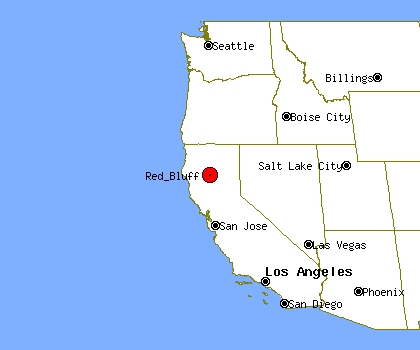
As she left her house that morning sometime around 8 am, a light rain was falling so Rashell popped her new umbrella open as she headed off to her tiny Seventh Day Adventist School on Jackson Street which was about six blocks away. She routinely walked to school with her friend & classmate, Becky Turner. Their school was so small that she & Becky were the only two girls in eighth grade at the time.
Rashell’s route to school was busy with students heading to the several other schools near hers & as she walked past Becky’s apartment, she realized the family’s car was gone. Becky’s mom, Marjorie, was the principal & teacher at the school, so Rashell likely assumed that Mrs. Turner decided to drive her daughter that morning because of the rain so she didn’t bother stopping at their place.
About an hour later, a local rancher west of Red Bluff on Pine Creek Road off of Interstate 5 in Tehama was in his home about seven miles from town, when he recalled hearing the sound of a single gun-shot. The rancher was aware that recently, there had been issues with senseless cattle shootings so he walked to his phone to contact the county sheriff. However, as he prepared to dial, he glanced out his window & saw a brown car driving down the road. Noticing how calmly the car was driving, he set his phone back down & decided to move on with his morning.
Just after 11:30 am, the same rancher was walking along his fence line when he was shocked to see the body of a young girl lying along the dirt road. Rashell was still wearing the jeans & blouse she carefully picked out to wear to school that day, only hours earlier. Her hands were bound with tape in front of her & she’d been shot in the head. The rancher immediately ran back to his house & called the sheriff.

Meanwhile, Rachell’s mom, Sandy Howes, came back home that afternoon from the local California Highway Patrol substation where she worked, but Rashell wasn’t home. Sandy was immediately concerned since her daughter was normally back by then & she heard the news of a body of a teenage girl having been found that day.
Sandy left the house & drove her van to the Turner’s apartment to talk to Becky. After Becky answered the door, she confirmed what Sandy had been fearing; Rashell had not been at school that day. Mrs. Howes immediately felt the blood rush from her face as she turned pale & headed back home to contact the sheriff’s office. She was told that deputies were still trying to confirm the young female victim’s identity.
When it was confirmed that the victim was 14-year-old Rashell, the community of Red Bluff were stunned & terrified. She was an incredibly well-liked girl & for days after her death, students were unable to focus on their classwork as they grieved the sudden & violent loss of their friend.
At the time, police wouldn’t confirm whether Rashell had been sexually assaulted while local gossip spread that the crime had been sexually motivated. It was ultimately confirmed that Rashell had been sexually assaulted & shot in the back of the head. Police officers visited all of the area schools to speak with the children about protecting themselves & staying safe.
Becky Turner was absolutely traumatized by her friend’s death & was unable to sleep alone or even walk along Jackson Street for weeks. After Rashell’s murder, students from area schools began walking in groups & no female students were seen walking alone.
In April, the eleven students from Seventh Day Adventist School gathered alongside Rashell’s parents on the lawn of the school to plant a tulip tree in her memory. At the base of the tree, they placed a plaque that reads, Rashell Ward. She was loved by all.
Month after month, investigators from the Tehama County Sheriff’s Office followed leads & tips, but sadly, they found themselves at a dead end.
Henry Lee Lucas, also known as The Confession Killer, who died at age 64 in 2001, indicated that he was responsible for Rashell’s murder. The man earned this name after he confessed to killing as many as six hundred women while driving around the nation’s interstates over an eight year span, but has only three confirmed murders; his mother & two others.
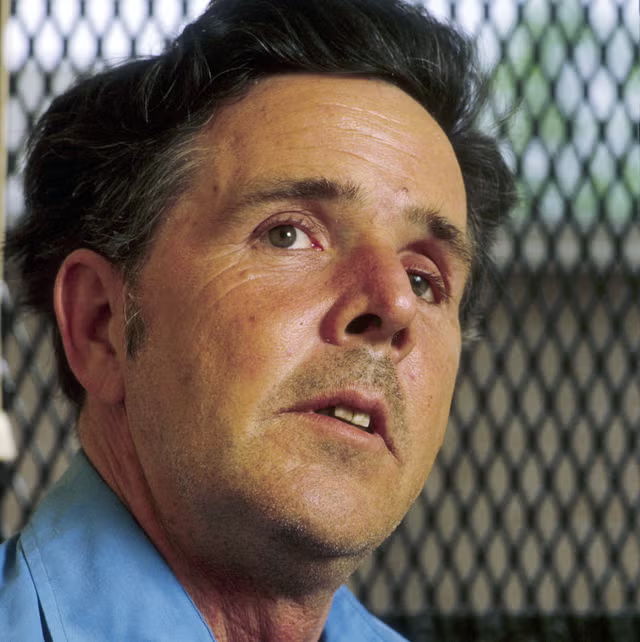
During the three hours they interviewed him, Lucas told investigators that he couldn’t recall the name of the town where the murder happened, but described its location & said it was 143 miles north of Sacramento. Because of the inconsistencies in his accounts as well as the fact he spoke of areas where Rashell’s body had not been found & didn’t know specifics about the crime, he was eventually cleared from the case. However, his confession wasted significant time & resources.
Because of the significant media coverage, Rashell’s case brought forth an overwhelming volume of tips that led to various suspects
Based on the rancher’s reports, investigators assume that after Rashell passed Becky’s apartment, she likely walked 150 yards farther down Jackson Street as she neared the bluff with the public elementary school on it. At that point, a brown car pulled to the curb & a man with a beard & long hair got out, walked up to her & likely showed her his gun & forced her into his car.
Detectives gathered several items of evidence at the scene despite the fact that in 1983, with DNA technology in its infancy, they were not useful at the time. However, their forethought proved to be crucial in the end. At the time, though, the sheriff’s office & staff worked around the clock, pursuing tips, wading through potential suspects & suspect vehicles.
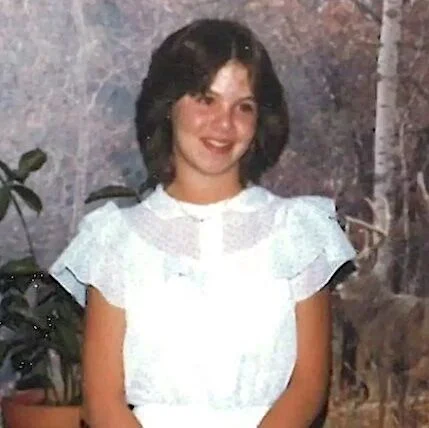
At one point, a rumor swirled around town that the sheriff at the time, Ron Koenig, was involved in Rashell’s murder. Some believed that because he was a member of law enforcement, it was being covered up. However, no evidence supported any of the various versions of the rumor throughout the years of investigation.
The case eventually grew cold, but remained open through the 1990s & 2000s with additional suspects interviewed. Throughout these years, DNA samples were taken, witnesses were reinterviewed as new detectives cycled into office as past detectives began to retire.
As the years continued to pass, there were progressive advancements in DNA technology & various pieces of evidence were re-submitted for DNA analysis, but sadly, they weren’t a match to any suspects. Despite the setbacks & lack of investigative leads, the detectives remained dedicated to solving Rashell’s case & hoped they could one day bring closure to her family.
In 2022, after the passage of 39 years, detectives began discussing a new investigative approach involving the use of genetic genealogy. When DNA evidence from a crime scene isn’t a match to a suspect within the FBI’s database, genealogy databases offer a new route. These databases store detailed DNA data from people who took tests to learn about their heritage.
If DNA from a crime scene is a match to someone in these databases, experts can create family trees which show distant cousins, great-grandparents & more. Mapping out the connections can pinpoint a likely suspect. This process can take weeks to months, but can solve decades old cold cases.
As of 2023, more than 600 cases have been solved using investigative genetic genealogy (IGG). IGG isn’t just a powerful tool for solving violent crimes of homicide or sexual assault, but has also been used to identify human remains & missing person investigations.
So in 2022, investigators realized that back in 1983, detectives bagged up a single rootless stand of hair that had been recovered from Rashell’s body, that did not belong to her & could be tested to obtain a possible lead through comparison with ancestral DNA analysis.
After meeting with the FBI & the California Department of Justice, who had been involved in Rashell’s case from the beginning, the investigative team made the decision to use this technique. The Tehama County Sheriff’s Office connected with Astrea Forensics & submitted the strand of hair for testing & analysis.
Once a genotype was completed, the information was sent to the FBI to begin the investigative genealogy process. Normally, this process can be complex & take significant time to complete, but in this case, the turnaround was rapid.
On September 7, 2023, sheriff’s detectives, the California Department of Justice & the FBI met to review the results of the investigative genealogy. The lead came back with a possible suspect, Johnny Lee Coy, a former Red Bluff resident who had a violent criminal history. Despite his violent history & close proximity to the murder, the man had never been considered a suspect.
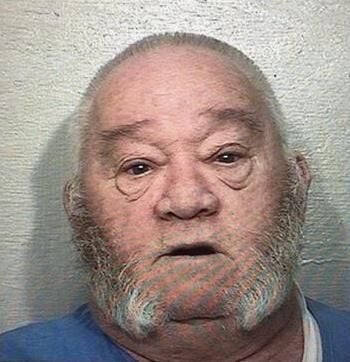
In 1989, six years after Rashell Ward’s abduction, rape & murder, Johnny Coy flagged down a mother & her 21-year-old daughter who were driving down the Antelope Boulevard area & kidnapped them; he forced them to drive up Highway 36 East at gunpoint. He raped the 21-year-old girl & stole personal items as well as their car.
Coy was later tracked down in Red Bluff where he was armed with a handgun & arrested. He was convicted in Tehama County & sentenced to two life terms in prison. Detectives learned that he died in June 2019 & would never face justice for Rashell’s murder.
With this lead, detectives began to look for the man’s relatives in the Tehama County area. After they found several family members & explained the situation, they agreed to assist & voluntarily provided a DNA sample to be compared to the DNA recovered in 1983 from Rashell’s body.
The results quickly came back & confirmed that it’s highly likely that the DNA recovered from the evidence was a family member of Coy’s relatives.
A couple of different types of DNA tests were completed & each came back with the same conclusion that the DNA recovered in 1983 was a close relative to the family. The California Department of Justice also learned that when Coy was processed into prison, a sample of DNA was taken & submitted into the FBI’s Combined DNA Index System (CODIS), however, at that point in time, the upload didn’t contain the same number of DNA markers utilized today. The California DOJ requested a re-upload using today’s technology.
On October 3, 2023, the sheriff’s office received a CODIS confirmation of the match & Coy’s DNA was confirmed to match the strand of hair found on Rashell’s body. Had Coy been alive today, the overwhelming DNA evidence would be enough to charge him for her abduction, rape & murder.
Not only did this information potentially give Rashell’s family a sense of closure, but it also cleared the name of former Sheriff Koenig, who died in 2009, of any criminal involvement in the case. Because Coy died before he was tied to the sweet, young girl’s murder, her family continues to feel a sense of pain that they aren’t able to face him & convey how his actions tore them apart.
Rashell had always been exceptionally close to her big sister, Andrea, who was living in Reno at the time of her death. Rashell often called Andrea collect & since she’d only recently gotten married, each time they spoke, Rashell always asked her sister if she was pregnant yet. Sadly, Andrea had only just found out that she was pregnant at the time of her sister’s death; something she never got the chance to share with her.
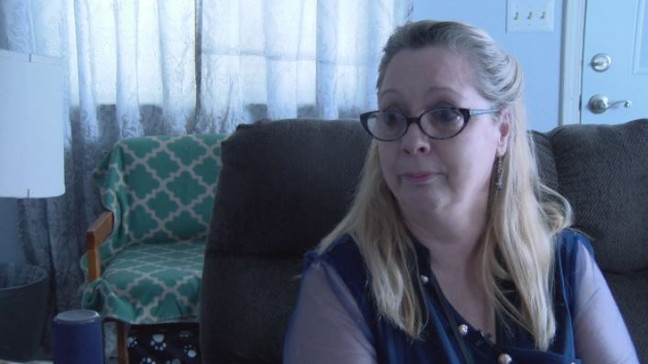
When Andrea became a grandmother, her daughter named her baby Rashell in honor of the aunt she never had the chance to meet, someone who, according to Andrea, was the kindest human you could ever know. Before her murder, Rachell volunteered her time at local nursing homes where she would read the residents stories & play checkers with them.
The Tehama County Sheriff’s Office now considers Rashell Ward’s case solved & officially closed after forty long years.
It’s unknown if Johnny Lee Coy was responsible for other violent crimes before he murdered Rashell or between 1983 & 1989 after his second attack, but only forensic evidence can prove if he was.
References:
- Newspapers.com: Austin American-Statesman: Fatal encounter of victims tied to interstates
- Sherry Black Foundation: Understanding Investigative Genetic Genealogy for solving violent crime
- Daily News: Rashell Ward murder case solved
- Medium: California sheriff announces 1983 murder of teenage girl was solved by a strand of hair
- SFGATE: 40-year-old California teen murder finally solved
- Forensic: Rootless hair sample, genealogy help ID suspect in 1983 murder of 14-year-old
- Wikipedia: Henry Lee Lucas
- The Sacramento Bee: Ronald Edward Koenig
- Facebook: The 1983 murder of a 14-year-old girl in Tehama County was solved Wednesday, according to the Tehama County Sheriff’s Office.


